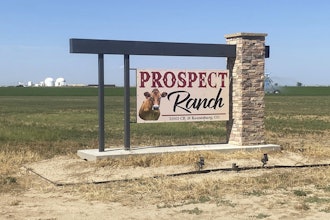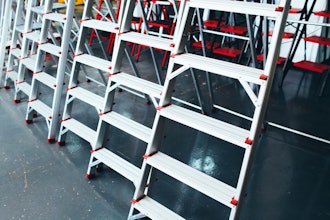
A truck used to deliver feed to a business where cattle are fattened hit a train track and shifted it at least a foot before an Amtrak train derailed in southwest Kansas and injured at least 32 people, an investigator said.
National Transportation Safety Board member Earl Weener did not say Tuesday if the feed truck was the cause of the Amtrak Southwest Chief's accident the day earlier.
But he said the impact of the truck from the Cimarron Crossing Feeders LLC shifted the train tracks 12 to 14 inches. The train was traveling 60 mph when the engineer applied the emergency brake, stopping 18 seconds later after traveling another 919 feet.
Amtrak's Southwest Chief was carrying 131 passengers and 14 crew members when it derailed early Monday, moments after an engineer noticed a significant bend in a rail and applied the emergency brakes, authorities said. At least 32 people were hurt, two of them critically.
Dave Gibbs, a passenger from Pueblo, Colorado, who was on the train, said Tuesday after learning of the NTSB finding that there should be some repercussion for whoever damaged the tracks because a lot of lives were affected by the derailment.
"I would probably be willing to travel on the train again because, you know, it definitely puts my mind a little more at ease that it wasn't an issue with Amtrak — that it was actually not their fault," Gibbs said.
The railroad tracks run alongside the south side of a paved highway, and are not fenced off from it. Fresh tire tracks were found on both sides of the highway near the derailment, and investigators put up crime scene tape to preserve the evidence. Cimarron Crossing is located north of the highway, and there is a gap in the fence separating that land from the highway where the tire tracks were found. The tire tracks were not located at a designated rail crossing.
Investigators reviewed data from cameras and recorders on the train as well as the condition of the rails and crew performance.
Cimarron Crossing has been "very cooperative" and granted investigators access to the truck, Weener said. NTSB posted photos of the vehicle on its Twitter feed. The business is licensed to feed up to 20,000 head of cattle. Huge grain bins were visible on the property from the site of the derailment.
Cimarron Crossing declined comment.
Weener said that forward facing video from the lead locomotive allowed investigators to identify a "localized distortion" in the track in the area of the impact. The track had last been inspected on Thursday.
The train was making a 43-hour journey from Los Angeles to Chicago when it derailed shortly after midnight along a straight stretch of tracks in flat farmland near Cimarron, a small community about 160 miles west of Wichita. Eight cars derailed, and four of them ended up on their sides.
Four of them remained hospitalized Tuesday, including two people still in critical condition who were airlifted to Amarillo, Texas. The rest had been released.
BNSF Railway, which owns the track, has asked the public to contact their emergency number posted at railroad crossings and on their website about any incident involving railroad tracks in the wake of Amtrak derailment. The company repaired about 1,000 feet of track at the site on Tuesday, allowing freight and passenger service to resume over the route.
Amtrak said in a statement Tuesday that BNSF has restored the route and normal Southwest Chief service is returning in western Kansas.
The future of the Southwest Chief service — the only Amtrak route through Kansas, with stops at six cities — had been uncertain in recent years. Amtrak had warned it might stop or reroute the line because of disputes over who would pay to install safety technology, but officials reached a deal last year.
Tens of millions of dollars were invested in improving parts of the rail line in Colorado and Kansas.
NTSB said it generally takes a year before it issues a final report on the cause of an accident.






















